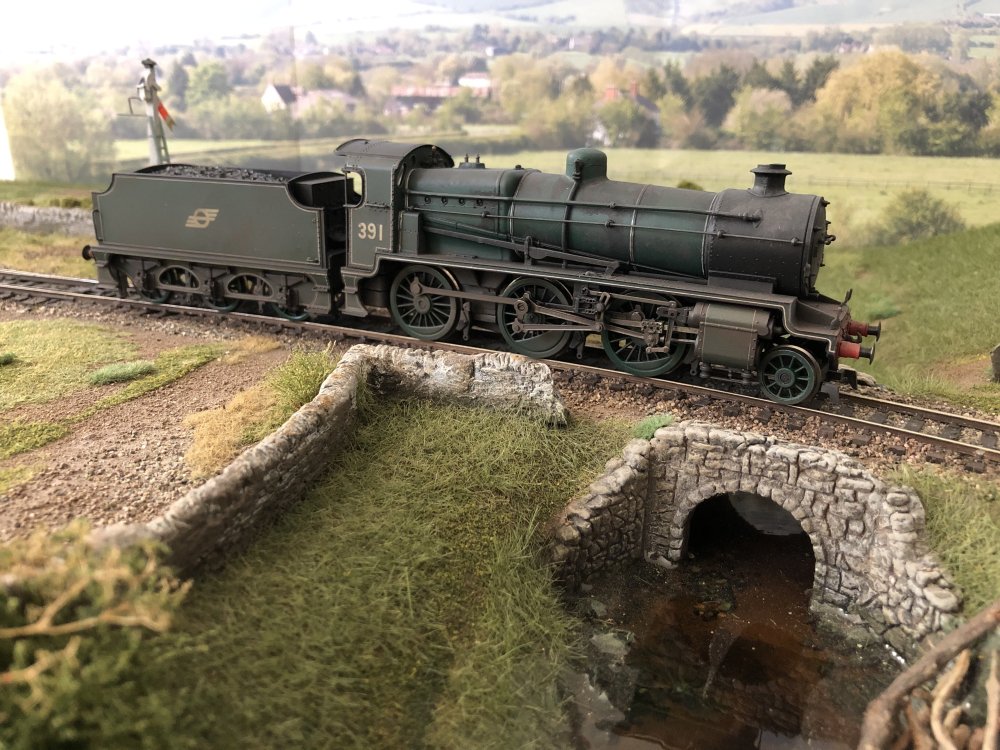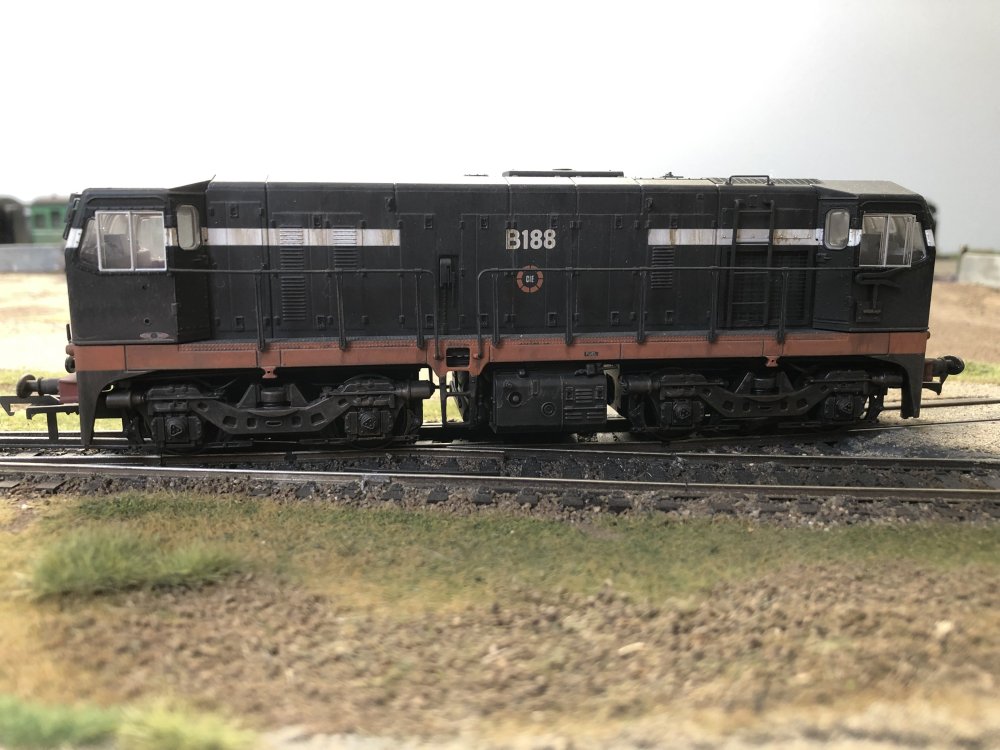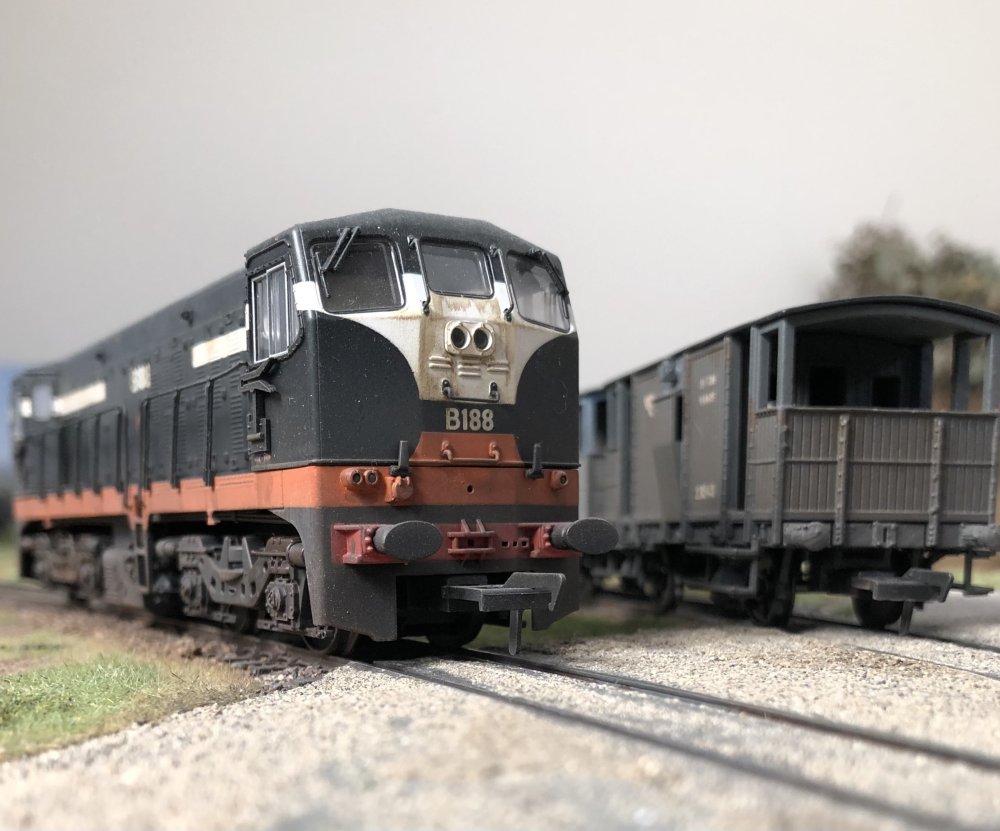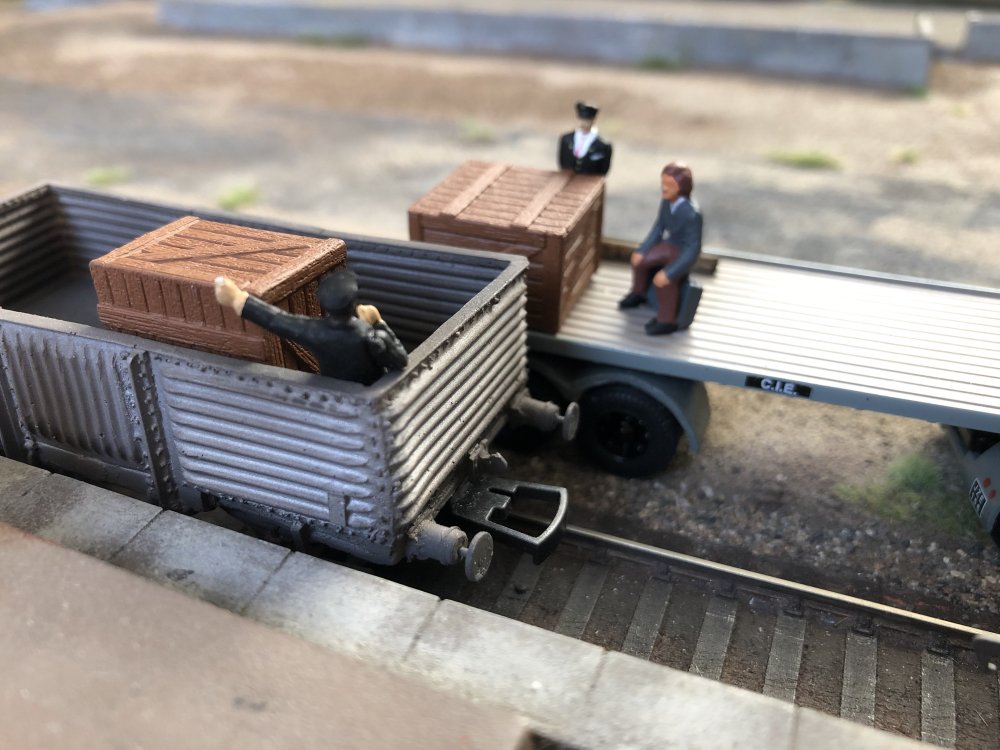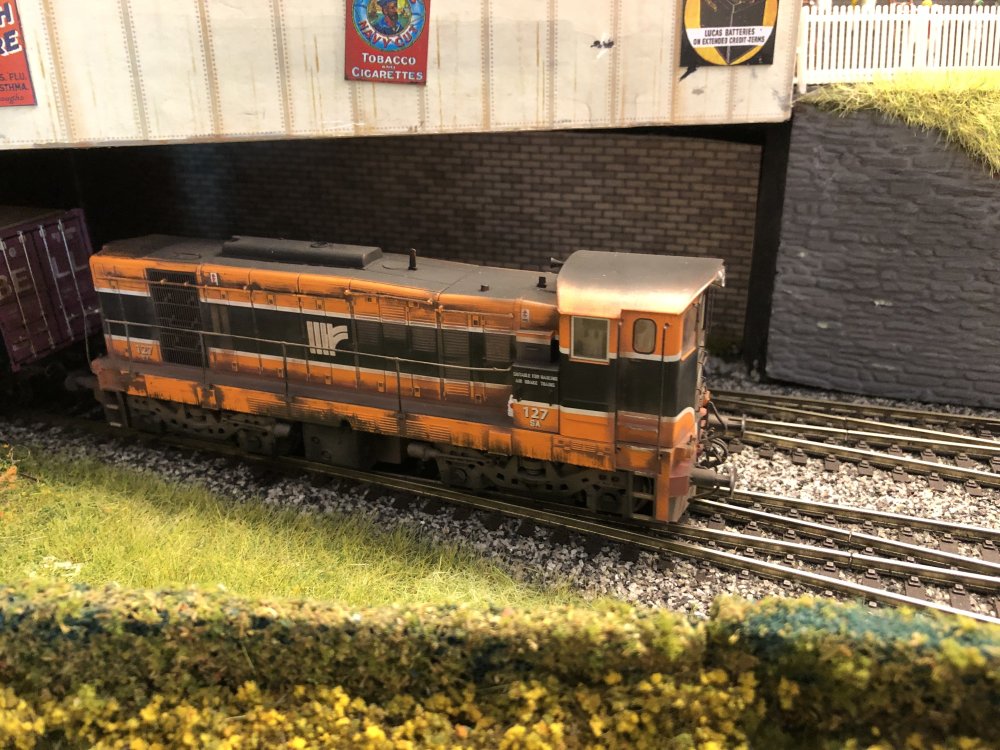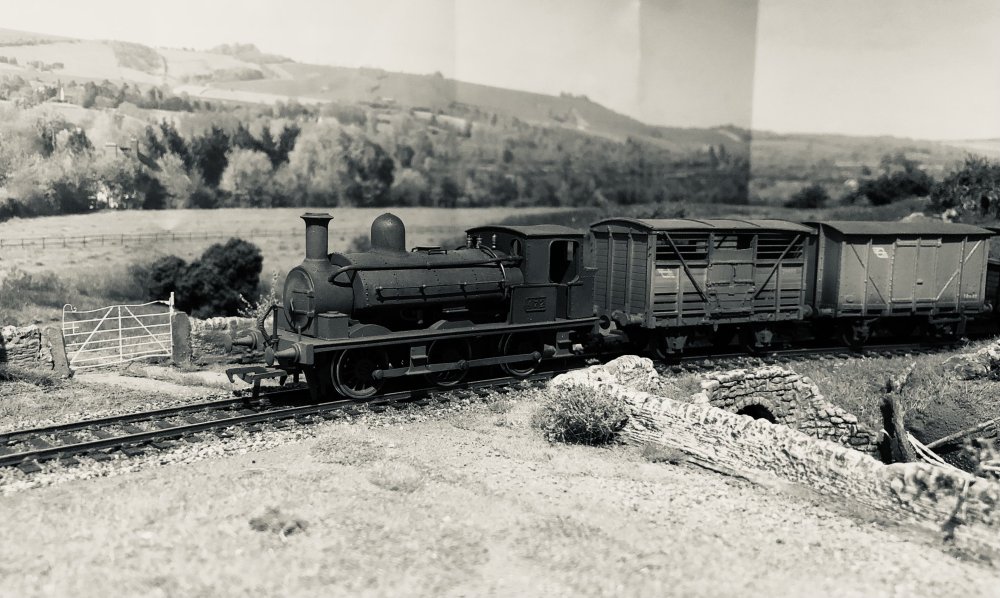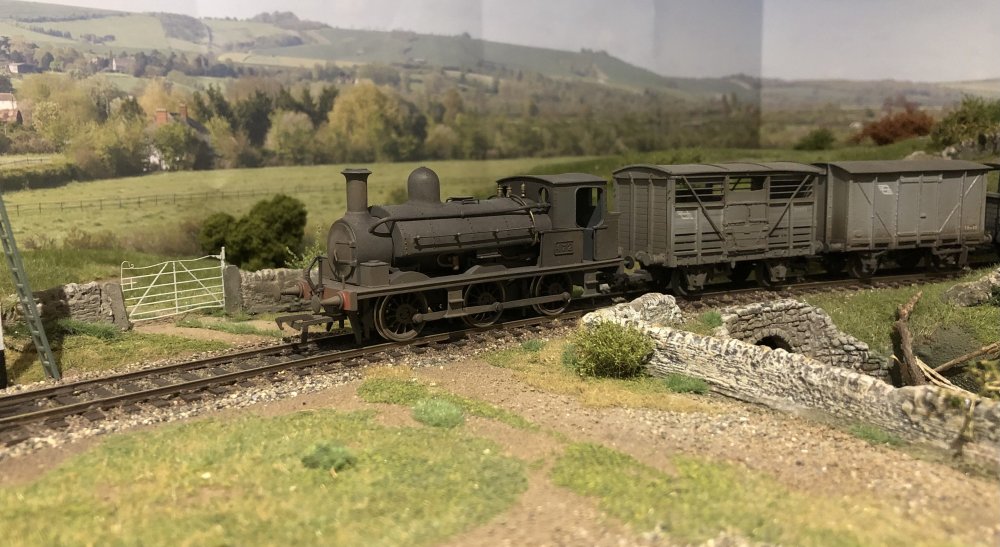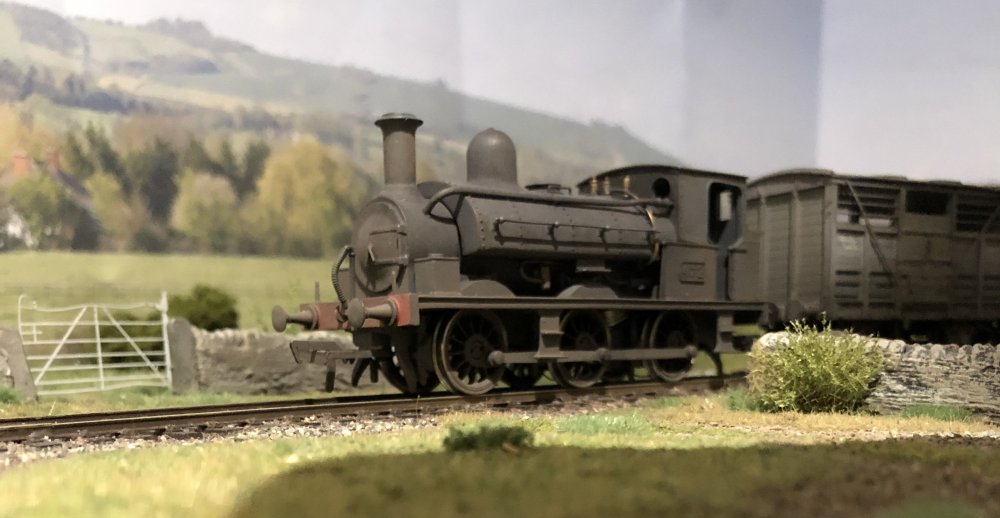-
Posts
15,915 -
Joined
-
Last visited
-
Days Won
394
Content Type
Profiles
Forums
Events
Gallery
Blogs
Community Map
Everything posted by jhb171achill
-
More excellent weathering by Dempsey of this forum…. More will be unveiled in the coming days. . ”…it says three crates on the docket. Where’s the other one? And there was supposed to be a load of timber for the boatyard too….”
-
A couple of videos of a very realistically grubby 121 out’n’about on a friend’s layout today…. IMG_3021.MOV IMG_3020.MOV IMG_3019.MOV
- 11 replies
-
- 15
-

-

-
Ah, yes! Apologies, forgot. I'll look for them over the weekend.
-
The wagon tarpaulin thing comes at a good time for me. I made one out of a piece of glasses cleaning cloth glued to a bit of stiff paper and bent into shape recently, but I'm not 100% happy with it - it looks a bit too coarse. It'll do for the time being, but I will have another wagon to do, so the "kleenex" sounds well worth a try. What sort of bath sealant is recommended?
-
Yes, it is in store at Cultra, I believe.
-
I remember seeing that one! He told Senior that once he died, he didn't want his engines to be "pulled by children along the pavement with a string".........!
-
That's what they get for putting a finescale model on old Super 4 track! The cork underlay under the track has warped too - wrong glue, obviously, or water damage to the baseboard.
-
I should have added that the all-grey livery with central maroon band, as used on the sets which went south for a while, was again the same shade. I remember comparing a newly-painted one with a pretty clean 80 class power car in maroon & blue at York Road - definitely same paint.
-
Londonderry and Enniskillen Railway Livery
jhb171achill replied to Killian Keane's question in Questions & Answers
No details whatsoever have survived about their coaches and wagon stock, though given the norms of the time the latter are likely to have been grey or black. As with many early railways, given that the passenger clientele were to some extent illiterate, or only able to read the Irish language (so studiously avoided by railway companies!), it is possible that like the early BCDR, D & KR, W & TR, etc., the carriages were colour-coded according to class. However, no confirmation of this appears to be extant. As far as the locomotives are concerned, they had two second-hand Ulster Railway locos at one stage, which like most of their own stock proved to be very unsatisfactory, but that's another story - so these two would have been in the Ulster's brick red livery, probably something like the 1950s / early 60s Isle of Man loco red. It is probable that their own locomotives were a green colour of some sort, probably a dark emerald green, as this was then common. I am unaware of any other information regarding this company. -
To use British Rail carriage maroon would not at all be off the mark. Having seen both at close quarters many times, both in pristine and worn / weathered / grubby states, to my eye they're as close as anything. It is worth adding that the original maroon used by NIR in their maroon / light grey livery, then their all-maroon hauled coach livery, followed by their "Enterprise" / 70 / 80 class maroon & blue - was all the same shade.
-
That’s very much the best way to go!
-
Interested in the “A” class story - a couple of trial runs, yes, but West Cork experts have always assured me that none ever went there “in traffic” at all…. Nice idea, though!
-
Cyril Fry managed to produce a model of something which had yet to enter traffic, as he got the drawings from Inchicore as it was under construction…..(the Drumm train). Just sayin’….
-
Summer 1960 sees the last Bandon saddle tank in traffic drift into Dugort Harbour with the goods. Or…. With this new-fangled Kodachrome colour film…..
-
- 36 replies
-
- 15
-

-

-

-
Quite a few wagon relics still kickin' about in Limerick..........
-
Cavan & Leitrim Railway brake van 16L - ref pic?
jhb171achill replied to Pete00018's topic in Irish Models
I’d say so, yes. C&L vans probably weren’t high in CIE’s priority list then! -
Cavan & Leitrim Railway brake van 16L - ref pic?
jhb171achill replied to Pete00018's topic in Irish Models
That does look like 16, indeed. At the end, no two of these vans were alike - every survivor had differences to its panelling. Thus, a model of a specific one is going to differ in at least some detail from any other! -
I’ll be on the railway embankment under the tree, just to the left of the old washing machine, tyres and bent supermarket trolley.
-
Madam’s going to Wales tomorrow via train to Rosslare, which is why I asked! Thanks!
-
Now that’s a suitably civilised breakfast!
-
A bit late in the day to ask, but will this affect train services tomorrow?
-
THAT's not catering - there are BEANS on it!!! The horrors.........! Yes, but they did put extra air bubbles in the Aero to compensate.........
.png.c363cdf5c3fb7955cd92a55eb6dbbae0.png)

